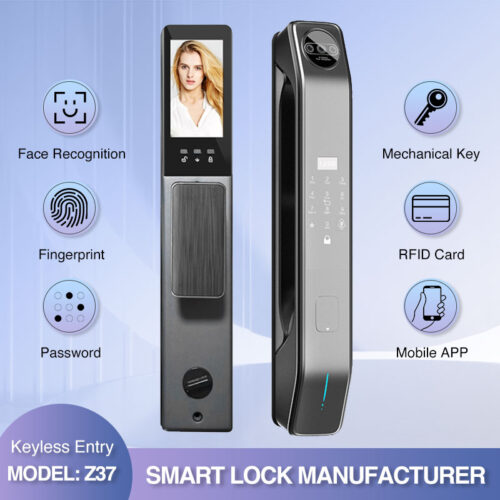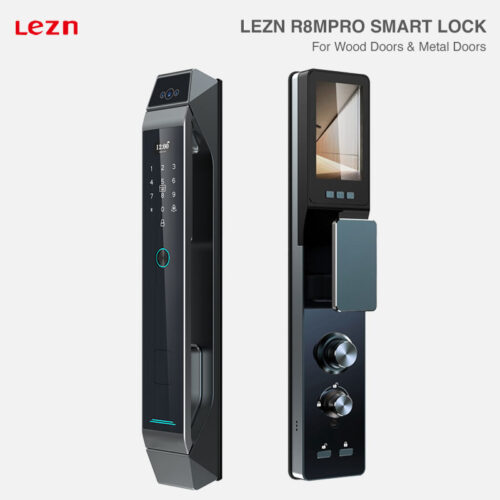In today’s world of smart home technology, smart locks have become a popular choice for enhancing both security and convenience. However, with so many options available in the market, choosing the right smart lock can feel overwhelming. This comprehensive guide will walk you through the key factors to consider when selecting a smart lock that fits your needs perfectly.
1. Define Your Needs
Before diving into the world of smart locks, it’s essential to understand what you need most from a smart lock. Are you primarily concerned about security? Or are you looking for convenience? Perhaps you want to integrate it with your existing smart home setup? Different needs will guide you toward different features.
- Security First: If security is your top priority, look for a smart lock that offers multiple biometric authentication methods, such as fingerprint, vein recognition, or 3D facial recognition. These technologies are nearly impossible to replicate and provide the highest level of security.
- Convenience Matters: If convenience is key, consider a smart lock that supports multiple unlocking methods, including passwords, mobile apps, and cards. Features like remote unlocking, automatic locking, and temporary passwords for guests or service providers can also make your life easier.
- Smart Home Integration: If you already have a smart home ecosystem, choose a smart lock that seamlessly integrates with your existing devices. Look for compatibility with popular platforms like Amazon Alexa, Google Assistant, Apple HomeKit, or protocols like Matter, Zigbee, and Z-Wave.
2. Prioritize Security Features
Security is the core function of any lock, and smart locks are no exception. Here are some key security features to look for:
Biometric Authentication
Biometric locks use your unique biological traits to verify your identity. Fingerprint, vein, and facial recognition are some of the most common methods. These technologies are highly secure and virtually impossible to hack.
Password Protection
If you prefer using a password, ensure the smart lock offers a “dummy code” feature, allowing you to enter random numbers before and after the actual code to prevent shoulder surfing. Additionally, temporary passwords can be useful for granting one-time or limited-time access to visitors.
Anti-Tamper Alerts
Smart locks with anti-tamper features will alert you and sound an alarm if someone tries to force the lock open or enters the wrong code multiple times. This can deter potential intruders and keep you informed of any suspicious activity.
Data Encryption
Ensure your smart lock uses advanced encryption to protect your data and prevent hacking. This is especially important if the lock connects to the internet or other smart devices.
3. Convenience Features to Enhance Your Daily Life
Smart locks are designed to make your life easier. Here are some features to consider:
Multiple Unlock Methods
A smart lock that supports various unlocking methods gives you flexibility. For example, you can use facial recognition when your hands are full, a password if your phone is dead, or a mobile app when you’re away from home.
Remote Control
Remote control via a mobile app allows you to lock and unlock your door from anywhere. This is incredibly useful for letting in guests, service providers, or family members when you’re not home.
Automatic Locking
Automatic locking ensures your door is secure even if you forget to lock it manually. Some smart locks offer delayed auto-locking, giving you time to leave without getting locked out.
4. Smart Home Integration for a Seamless Experience
If you have a smart home setup, integrating your smart lock can enhance your overall experience. For example, you can:
- Use voice commands to lock or unlock your door via smart assistants like Alexa or Google Assistant.
- Set up routines where your lights turn on and your lock engages as you approach home.
- Integrate with security cameras to see who is at the door before unlocking.
5. Battery Life and Backup Options
Battery life is crucial for a smart lock. Look for models with low power consumption to reduce the frequency of battery replacements. Some smart locks offer USB charging or backup batteries to ensure they work even if the primary battery runs out.
6. Design and Installation
A smart lock should not only be functional but also aesthetically pleasing. Choose a design that matches your door and home decor. Additionally, ensure the lock is compatible with your door type (e.g., single or double doors) and consider whether you need professional installation.
7. Choose a Reputable Brand
Investing in a well-known brand often means better quality and reliability. Established brands like August Home, Yale, Kwikset, and Ultraloq have a proven track record and offer robust customer support. Reading user reviews and expert reviews can also provide valuable insights into a product’s performance.
8. Budget: Finding the Right Balance
Smart locks come in a wide range of prices. While it’s tempting to go for the cheapest option, don’t compromise on security. Look for a balance between features, quality, and price. Sometimes, waiting for sales or discounts can help you get a high-quality smart lock at a better price.
Conclusion
Choosing the right smart lock involves understanding your needs, prioritizing security, considering convenience, and ensuring compatibility with your smart home setup. By carefully evaluating these factors, you can find a smart lock that enhances both the security and convenience of your home. If you have any questions or need further guidance, feel free to leave a comment below.
Smart Door Lock
Smart Door Lock
Smart Door Lock
Smart Home Lock








